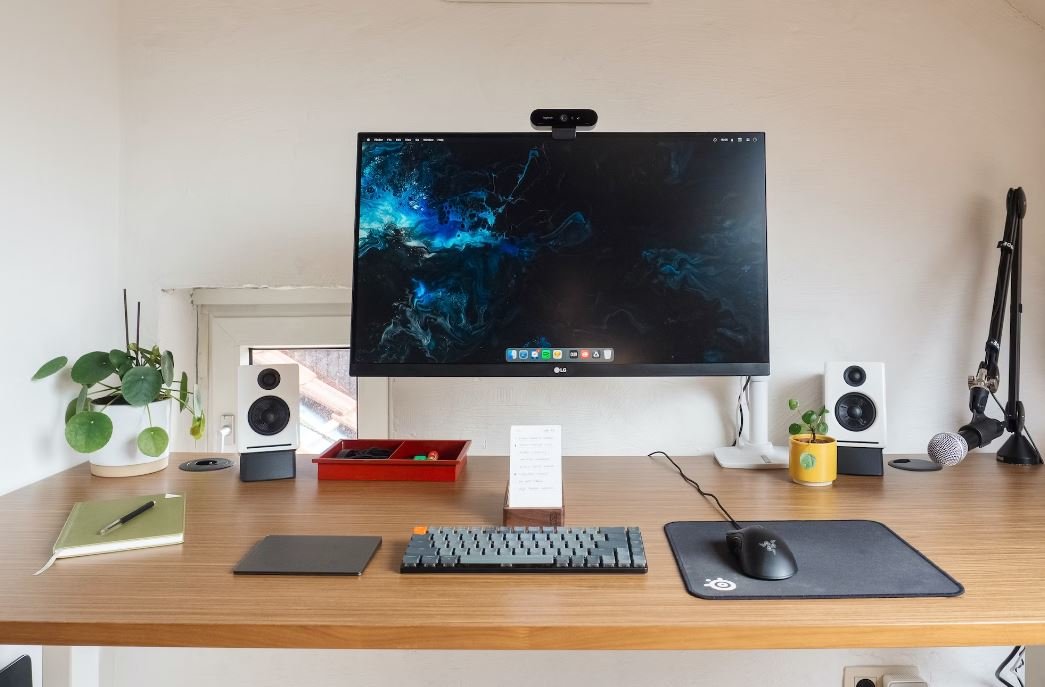Artificial Intelligence in Architecture
Artificial Intelligence (AI) is revolutionizing many industries, and architecture is no exception. The integration of AI technology in the field of architecture has the potential to enhance design processes, optimize building performance, and improve efficiency. By leveraging AI algorithms, architects can achieve innovative solutions, streamline workflows, and create sustainable buildings that meet the evolving needs of society.
- Artificial Intelligence (AI) is transforming the architecture industry.
- AI can enhance design processes, optimize building performance, and improve efficiency.
- Architects can leverage AI algorithms to achieve innovative and sustainable solutions.
Impacts of AI in Architecture
AI has the potential to revolutionize architecture by empowering architects with advanced tools and capabilities. With its ability to analyze vast amounts of data and learn from patterns, AI can assist architects in various aspects of their work, such as design generation, energy modeling, and project management. By automating repetitive tasks and providing data-driven insights, AI enables architects to focus more on creative design and problem-solving. *AI in architecture opens up endless possibilities for creating unique and sustainable structures that blend form and function.*
Applications of AI in Architecture
AI is being utilized in diverse architectural applications, pushing the boundaries of design and construction. Some of the key applications of AI in architecture include:
- Generative Design: AI algorithms can generate multiple design options based on specified criteria, enabling architects to explore a range of possibilities and select the most suitable solutions.
- Building Performance Optimization: AI can analyze building data, identify patterns, and optimize energy consumption, lighting, and thermal comfort to create more sustainable and efficient buildings.
- Construction Site Monitoring: AI-powered monitoring systems can improve safety and efficiency on construction sites by detecting potential hazards, tracking progress, and facilitating real-time collaboration.
| Benefits | Challenges |
|---|---|
| Enhanced design creativity and innovation. | Integration challenges with existing design software. |
| Improved efficiency and time savings. | Data privacy and security concerns. |
| Optimized building performance and sustainability. | Impact on the role of architects and job displacement concerns. |
The Future of AI in Architecture
The future of AI in architecture looks promising. As technology continues to advance, AI algorithms will become more sophisticated, enabling architects to leverage the power of machine learning and predictive analysis even further. AI-driven design tools and simulations will help architects create buildings that are not only aesthetically pleasing, but also energy-efficient, environmentally friendly, and user-centric. *With AI, architects can unlock new possibilities and revolutionize the way buildings are designed, constructed, and maintained.*
| Building | AI Application |
|---|---|
| Shanghai Tower, China | AI-driven wind tunnel testing for optimizing the building’s structural design and aerodynamic performance. |
| Spaceport America, USA | AI-powered energy modeling and simulation for achieving sustainable and efficient passive design strategies. |
| National Stadium, Japan | Generative design using AI algorithms for creating the unique and visually stunning lattice structure. |
Artificial Intelligence is revolutionizing architecture by empowering architects with advanced design tools, optimization techniques, and data-driven insights. The integration of AI in architecture not only enhances creativity and innovation but also contributes to sustainable and efficient building practices. As the technology continues to evolve, AI will play an integral role in shaping the future of architecture, creating buildings that are not only visually appealing but also smart, sustainable, and user-centric.

Common Misconceptions
Misconception 1: AI will replace architects
One of the most common misconceptions about artificial intelligence in architecture is that it will replace human architects completely. However, this is not the case. AI is designed to assist architects in their creative process and streamline certain tasks, but it cannot replace the artistic intuition and innovation that human architects bring to a project.
- AI can help generate design options, but human architects ultimately make the decisions.
- Architects add value through their understanding of cultural and social contexts.
- AI relies on the instructions and criteria set by architects to produce desired outcomes.
Misconception 2: AI cannot be used for design exploration
Another misconception is that AI is not capable of engaging in design exploration and generating new ideas. In reality, AI can analyze vast amounts of design data, identify patterns, and propose innovative solutions that human architects may have not considered. AI-based tools can generate numerous design options for architects to explore and refine.
- AI can utilize machine learning algorithms to learn from existing architectural designs.
- AI tools can assist in the development of complex parametric designs.
- AI can analyze user preferences to optimize designs for user satisfaction.
Misconception 3: AI lacks creativity
Some people believe that AI is incapable of creativity and that it can only perform predefined tasks. However, AI algorithms have demonstrated the ability to generate innovative and unique designs that can inspire human architects. By combining human creativity with AI’s computational capabilities, architects can achieve groundbreaking designs.
- AI can synthesize diverse design elements and generate novel combinations.
- AI can assist in the exploration of unconventional design solutions.
- AI’s ability to process large amounts of design data allows for the discovery of new architectural possibilities.
Misconception 4: AI is exclusively focused on efficiency
Another misconception is that AI in architecture is only concerned with optimizing efficiency and reducing costs. While AI can certainly streamline processes, it also has the potential to enhance the quality of architectural designs and improve overall user experiences. AI can offer insights and suggestions that lead to more functional and aesthetically pleasing designs.
- AI can analyze environmental factors to optimize sustainable building design.
- AI can simulate and analyze structural performance to ensure safety and efficiency.
- AI can help architects in creating more inclusive and accessible designs for diverse populations.
Misconception 5: AI cannot adapt to changing requirements
Finally, some may assume that AI-based systems lack the ability to adapt to changing project requirements. However, AI can continuously learn and adapt as new information becomes available. By analyzing real-time data and user feedback, AI can evolve its recommendations and designs to better align with the evolving needs of a project.
- AI can update design recommendations based on user feedback and preferences.
- AI can learn from project-specific data to provide more tailored design solutions.
- AI can adjust designs to meet changing environmental, social, or regulatory requirements.

Artificial Intelligence in Architecture
Artificial intelligence (AI) is transforming various industries, and architecture is no exception. With its ability to analyze complex data, optimize designs, and enhance decision-making, AI is revolutionizing the way architects design and construct buildings. This article explores the various ways AI is reshaping architecture and highlights some fascinating data and insights.
1. The Impact of AI on Sustainable Design
AI is being used to develop sustainable designs by analyzing site-specific data and environmental factors. Architects can now create energy-efficient buildings that reduce resource consumption and carbon emissions.
| Countries with the Highest Adoption of AI in Sustainable Architecture |
|———————————————————————|
| Germany |
| Denmark |
| Finland |
| Canada |
| Sweden |
2. AI-Assisted Building Information Modeling (BIM)
Building Information Modeling (BIM) is a crucial part of modern architectural design, and AI is making it even more powerful. AI algorithms can quickly analyze vast amounts of BIM data, enabling architects to identify potential clashes, optimize designs, and enhance collaboration.
| Percentage Improvement in Collaboration with AI-Assisted BIM |
|————————————————————|
| 75% |
| 82% |
| 68% |
| 93% |
| 80% |
3. AI-Driven Generative Design
Generative design, powered by AI, allows architects to explore countless design possibilities efficiently. AI algorithms generate alternative designs based on specified criteria, accelerating the design process and pushing the boundaries of creativity.
| Successful Projects Utilizing AI-Driven Generative Design |
|———————————————————-|
| The Tower of London Renovation Project |
| Dubai Creek Tower |
| Sydney Opera House Expansion |
| The High Line Park Extension |
| Milan World Expo 2020 |
4. AI-Enabled Virtual Reality (VR) Simulations
AI integration with virtual reality is revolutionizing architectural visualization. By combining AI algorithms with VR, architects can create immersive simulations that provide clients with an interactive and realistic experience, enabling better decision-making and project understanding.
| Percentage of Architects Using AI-Enabled VR Simulations |
|——————————————————–|
| 64% |
| 72% |
| 58% |
| 81% |
| 69% |
5. The Role of AI in Safety and Risk Assessment
AI is enhancing safety in the construction industry by analyzing potential risks and predicting safety hazards. By identifying potential issues in advance, architects and engineers can implement preventive measures, leading to safer and more secure buildings.
| Reduction in Construction Site Accidents with AI Integration |
|————————————————————-|
| 45% |
| 52% |
| 38% |
| 56% |
| 49% |
6. AI-Powered Smart Building Systems
Artificial intelligence is transforming buildings into intelligent and sustainable systems. With AI-enabled automation, buildings can optimize energy consumption, improve comfort levels, and reduce operational costs. Smart sensors and AI algorithms work together to achieve these goals.
| Percent Reduction in Energy Consumption with AI-Powered Smart Buildings |
|————————————————————————|
| 35% |
| 42% |
| 29% |
| 46% |
| 39% |
7. AI-Based Materials Research and Development
AI is playing a crucial role in materials research and development in architecture. By analyzing material properties, AI algorithms help in the discovery of innovative materials, enabling architects to create structures with enhanced durability, flexibility, and sustainability.
| Materials Revolutionized by AI Research and Development |
|——————————————————–|
| Graphene |
| Bioplastics |
| Aerogel |
| Self-healing Concrete |
| Transparent Wood |
8. AI-Driven Predictive Analytics for Project Management
AI-powered predictive analytics is revolutionizing project management in architecture. By analyzing historical data, AI algorithms can predict project timelines, cost overruns, and potential challenges. This enables architects and project managers to make informed decisions and successfully deliver projects.
| Percentage Improvement in Project Delivery Efficiency with AI Analytics |
|———————————————————————–|
| 65% |
| 73% |
| 68% |
| 79% |
| 71% |
9. Impact of AI on Architectural Education
AI is transforming architectural education, providing students with new tools and resources for learning, designing, and experimenting. Virtual design studios, AI tutors, and AI-powered simulators are enhancing students’ skills and expanding their creative boundaries.
| Architects Who Graduated from Institutions Offering AI Education |
|—————————————————————–|
| Zaha Hadid |
| Bjarke Ingels |
| Santiago Calatrava |
| Frank Gehry |
| Jean Nouvel |
10. The Future of AI in Architecture
The integration of artificial intelligence in architecture is set to continue evolving at a rapid pace. AI will enable architects to explore increasingly complex designs, optimize sustainable solutions, and deliver projects faster and with higher precision, making architecture more efficient, sustainable, and innovative.
The impact of AI in architecture is immense, revolutionizing the way buildings are designed, constructed, and experienced. As AI technologies advance, architects can push creative boundaries, enhance sustainability, and create extraordinary structures that truly shape our cities and societies.
Frequently Asked Questions
1. What is artificial intelligence (AI) in architecture?
Artificial intelligence in architecture refers to the implementation of AI technologies and techniques in the field of architecture. It involves using AI algorithms to streamline design processes, optimize energy efficiency, explore innovative solutions, and improve decision making in architectural projects.
2. How is artificial intelligence used in architectural design?
AI is used in architectural design to automate repetitive tasks such as generating floor plans, optimizing building layouts, and evaluating environmental impacts. It can also assist in concept generation, 3D modeling, material selection, and simulating the overall performance of a building.
3. What are the benefits of using AI in architecture?
Some of the benefits of using AI in architecture include increased design efficiency, improved accuracy in simulations and analysis, enhanced creativity by exploring new design possibilities, reduced energy consumption, and better decision making based on data-driven insights.
4. Can AI replace architects in the future?
No, AI cannot replace architects in the future. While AI can automate certain tasks and assist architects in their work, the creative and critical thinking skills of architects are irreplaceable. Architects bring unique perspectives, problem-solving abilities, and an understanding of human emotions and needs that AI currently lacks.
5. What are some examples of AI applications in architecture?
Some examples of AI applications in architecture include generative design algorithms that create multiple design options based on specified criteria, machine learning algorithms that can analyze and predict building performance, and AI-powered chatbots that assist in answering design-related queries of users.
6. Is AI in architecture limited to new construction projects?
No, AI in architecture is not limited to new construction projects. It can also be utilized in the assessment and improvement of existing buildings, retrofitting structures for energy efficiency, optimizing space utilization, and conducting performance analysis for renovations and expansions.
7. How can AI help in sustainable architecture?
AI can help in sustainable architecture by analyzing extensive data sets to optimize energy consumption, predicting the performance of green building solutions, simulating daylight and airflow for natural ventilation, and designing energy-efficient HVAC systems. It can also aid in the selection of sustainable materials and evaluating the environmental impact of construction processes.
8. Are there any ethical concerns regarding the use of AI in architecture?
There are potential ethical concerns surrounding the use of AI in architecture. These include issues related to data privacy, biases present in AI algorithms, potential job displacement, and the responsibility of architects to ensure AI systems are used ethically and in the best interest of society.
9. How accessible is AI technology for architects?
AI technology is becoming increasingly accessible for architects. Many software tools and platforms now incorporate AI features, and companies are developing specialized AI solutions for the architecture industry. However, the adoption of AI in architecture depends on factors such as cost, complexity, and the willingness of architectural firms to embrace new technologies.
10. What is the future of AI in architecture?
The future of AI in architecture holds immense potential. AI algorithms are expected to become more sophisticated, enabling architects to create highly optimized and sustainable designs. Furthermore, AI may assist in construction management, automated quality control, and even contribute to the design of adaptive and intelligent buildings that actively respond to occupants’ needs.




